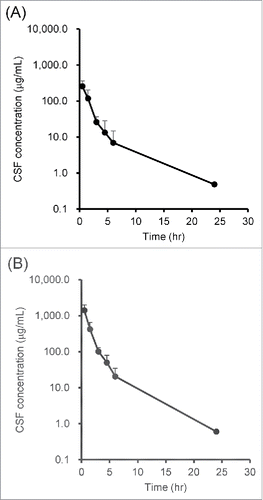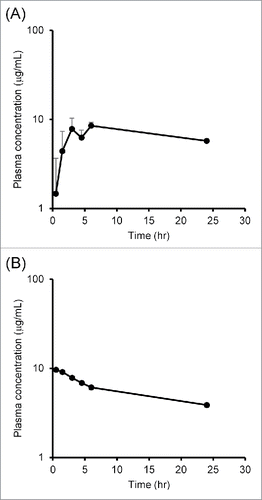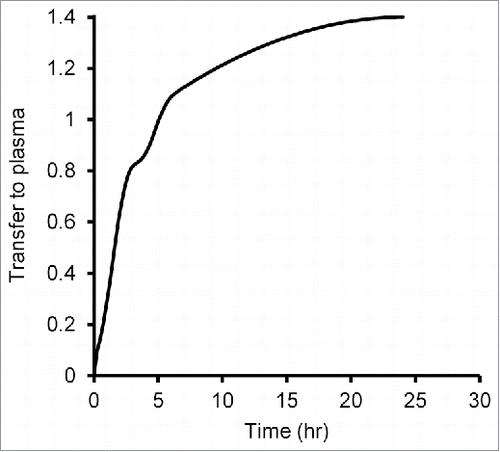Figures & data
Figure 1. Schematic diagram of animal experiments in rat brain. The diagram outlines the brain structure and indicates the position of indwelling catheters used for ICV administration and CSF sampling. IgG and Inulin were co-administered into the lateral ventricle. CSF was collected from the cisterna magna, in which CSF accumulates.

Figure 2. Concentration–time profiles of (A) IgG and (B) inulin in CSF after ICV administration. IgG and inulin were co-administered into the rat's lateral ventricle, and CSF was collected from the cisterna magna time-sequentially. The concentrations of IgG and inulin were measured by ligand binding assay using Gyrolab and ELISA, respectively. Each point with a vertical bar represents mean ± SD (n = 3)

Table 1. PK parameters of IgG in CSF. CSF concentration–time profiles of IgG were analyzed with a non-compartment model. Vdss, volume of distribution at steady-state; V0, volume of distribution at 0 hour.
Table 2. PK parameters of inulin in CSF. CSF concentration–time profiles of inulin were analyzed with a non-compartment model. Vdss, volume of distribution at steady-state; V0, volume of distribution at 0 hour.
Figure 3. Plasma concentration–time profiles of IgG after (A) ICV and (B) IV administration. (A) IgG and inulin were co-administered into the rat's lateral ventricle and plasma was collected time-sequentially. (B) IgG and inulin were co-administered into the rat's tail vein, and blood was collected. The concentrations of IgG in CSF and plasma were measured by ligand binding assay. Each point represents mean ± SD (n = 3)

Figure 4. Transfer ratio from CSF to plasma calculated by deconvolution analysis. Plasma concentrations of IgG that had been administered intracerebroventricularly and systemically were used for deconvolution analysis. A weighting function that shows the relationship between time and transfer rate was determined, and then the cumulative amount of the weighting function against the dosing amount was calculated.


